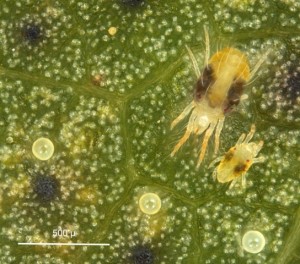The second half of the season has been very typical of West Tennessee. Plant bugs, stink bugs, bollworm and spider mite infestations have been highly variable. Some folks have sprayed a lot, others just once or twice. Now as we near the end, the common question is … can I quit spraying? Most folks plan is to “clean up” the field and turn it loose. This is a good plan in most cases, but let me make a few points.
1) If fields have accumulated more than 350 DD60s since reaching NAWF5, you should terminate treatments for plant bugs, stink bugs and bollworms. This assumes pests populations are at or below pest threshold levels at this time.
2) For fields that are not this mature, keep in mind that the last effective bloom date for Tennessee is August 12-15. This means that any bolls set after this date have < 50% chance of opening before a killing frost occurs (based on historical average weather … not considering global warming)
3) You will need to protect any bolls set by August 15 for about another 14 days. So if a field is just reaching NAWF5, bolls need to be protected for another 15-20 days, approximately September 1. You are gambling on favorable weather if spraying after this time.
4) The point of all this is … don’t quit early on late maturing cotton. Use the NAWF5 + 350 rule or somewhere around September 1st to as a cutoff to spraying insecticides, whichever comes first.

Spider mites put a wrinkle into the above decisions. Fields need to be protected from excessive defoliation for about NAWF5 + 600-800 DD60s. The good news … my experience is spider mites will rarely blow up to treatment levels if fields are relatively free of mites at NAWF5 + 350 DD60s, and late infestation are less likely to cause serious yield losses. However, fields with spider mites need to be monitored for 2-3 additional weeks beyond NAWF5 + 350 DD60s if they are not treated.
If treatment for spider mites is needed, abamectin is the most obvious choice. Formerly called Zephyr, Agri-Mek, Abba or one of the other generic alternatives is probably the best combination of efficacy and economics. Brigade or other bifenthrin products sometimes do the trick but frequently only provide temporary relief.


One thought on “Cotton – Terminating Insecticide Applications”
Comments are closed.